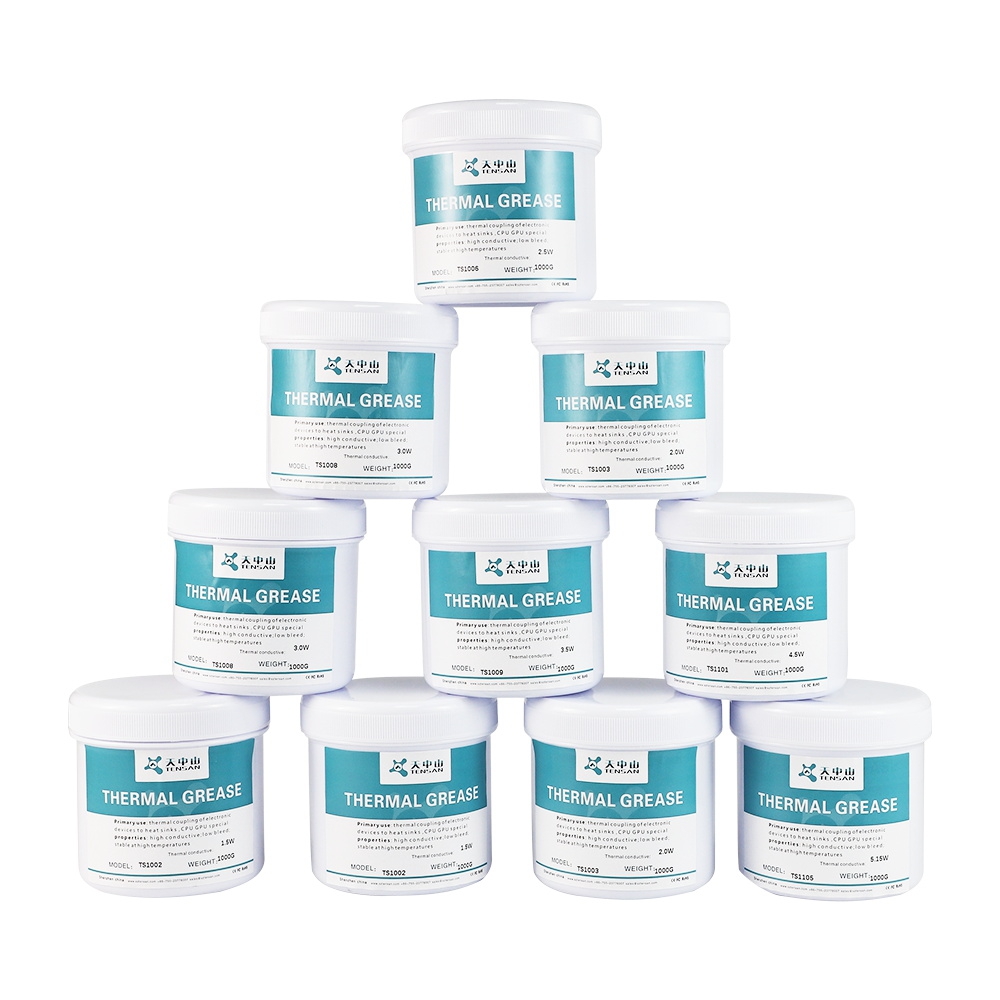Difference between thermally conductive silicone grease and thermally conductive silicone.
Thermally conductive silicone grease is also known as thermally conductive paste, thermal silicone grease, thermal paste. It is formulated with silicone oil, heat transfer fillers, and functional additives. It has excellent thermal conductivity, electrical insulation, and high-temperature resistance.
Thermally conductive silicone is a type of silicone rubber that is a one-component outdoor temperature vulcanized liquid, paste rubber, which is characterized by its solidification at room temperature and also has certain thermal conductivity.
Thermally conductive silicone grease and thermally conductive silicone, although only literally a word away, and are used as thermally conductive materials, a medium between electronic components and heat sinks. However, they are two completely different things. In comparison, silicone grease has a much wider range of applications and has much higher thermal conductivity than silicon. The thermally conductive silicone, on the other hand, acts as a fixing agent because it can solidify under normal conditions and bond the electronic components to the heat sink.
How to use CPU thermally conductive silicone.
Step 1: First clean the CPU core and the surface of the heat sink with a clean, soft lint-free cloth moistened with high purity isoamyl alcohol or acetone.
Step 2: Squeeze an appropriate amount of thermally conductive silicone grease onto the surface of the heat sink
Step 3: Put on the finger grips and gently rub the silicone grease on the cooler with your fingers until it is evenly distributed over the entire contact surface with the CPU. The purpose is to fill the gaps in the contact surface of the heatsink and to expel the air.
Step 4: Use a plastic scraper to pick up a small amount of thermal grease (about 0.1~0.2g) onto the CPU core surface and then apply it evenly over the entire core. The thinner the thickness, the better.
Step 5: Use a clean cloth to gently wipe away the thermal grease from the bottom of the cooler, being careful to be gentle
Step 6: Place the heat sink on the CPU and gently press it on.
The use of thermal grease in household appliances
With the development of society, the progress of technology, and the improvement of people's quality of life, household appliances are more and more widely used in life, from TVs, refrigerators, air conditioners, stereos to computers, induction cookers, microwave ovens, water dispensers and electric kettles (electric coffee pots), and a series of products that are closely related to people's lives.
As we all know, during the use of household appliances, the electronic power devices (such as chips, control boards, CPUs, graphics cards, transistors, semiconductor tubes, etc.) generate considerable heat in the process, and the high temperature can affect the performance of the power devices and even endanger their service life.
Helping to cool them down through the action of the heat sink is an effective way to solve the problem of overheating power devices. However, the contact surface between the heat sink and the power device is not flat and there will be large or small gaps, which will therefore affect the heat dissipation efficiency (the thermal conductivity of air is approximately 0.03 W/M-K). If thermal grease is applied to the middle of the contact surface between the power device and the heat sink, it fills the gaps between them and, together with the metal oxide component in the thermal grease, the thermal effect is greatly enhanced, thus ensuring the normal use of the power device and extending its service life.
The greater the thermal conductivity of the silicone grease, the more metal oxide it contains and the better its heat dissipation function.
The role of thermally conductive silicone grease
It is used to fill the gaps between the heat sink and the heat generators, such as CPUs, chips, semiconductors, diodes, SCRs, etc. so that they have better contact, thus allowing the heat sink to have a greater effect and extending the life of the heat generators.
What is thermal conductivity?
It is how many watts of heat can be transmitted per unit length in w/m.k, W is the power, M is the length, K is the absolute temperature, unit kaizen, the greater the value of thermal conductivity, the better the thermal conductivity of the material, generally pure copper has a thermal conductivity of 390-402 w/m.k, silver 420 w/m.k, and aluminum 220 w/m.k.
